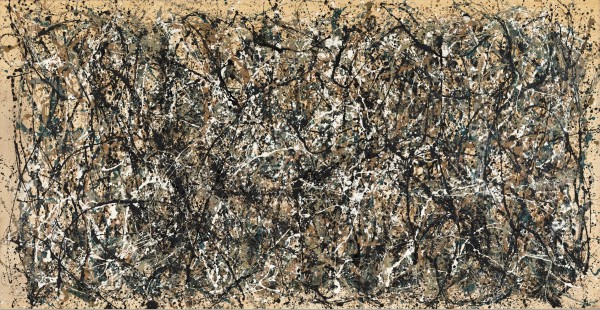
Here’s Jackson Pollock’s “One: Number 31, 1950”, now (and always, one hopes) on display at the Museum of Modern Art in New York. I recently spent an hour in front of it with Christian Viveros-Fauné, taping the latest of our “Strictly Critical” videos, which edits those 60 minutes down to five. (Click on my image to watch the vid.) One discussion whose details ended up on the cutting-room floor was about how Jackson Pollock’s enemies were endlessly comparing his work to tablecloths and ties and other works of design. I haven’t done the in-depth research yet, but that seems to imply that designers had come up with some of the painter’s ideas before he did. Of course, sociologically and in terms of semiotics, a tie and a canvas – or any work of design versus any work of art – are very different things, however much they may look the same. The makers of Duchamp’s urinal can’t take credit for what it means as art. Still, I want to know precisely what Pollock’s critics had in mind when they saw parallels to his art in fabrics. Was it just about repeats, alloverism, and laciness, or were the textile precedents stronger than that? If they were, there’s no way a tough-guy AbEx-er like him could admit to borrowing from such feminine arts: He might as well have gone around wearing an apron.
For a full survey of past Daily Pics visit blakegopnik.com/archive